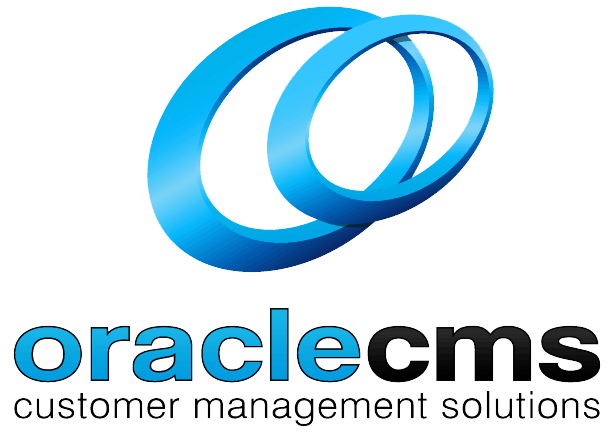
Best Customer Experience Metrics & KPIs
Back in the day, figuring out how customers felt about a brand and business was relatively inelegant. In essence, if a customer never returned, they weren’t all that impressed. Not only is that practically impossible to track, but it wouldn’t help business owners improve their services either.
Fast forward to today and there are so many different means of measuring CX (customer experience), but which one works the best? And what is the connection between customer experience management and its monetary value? Is there genuine value to be gained?
In this article, we’re going to explore 6 of the best customer experience metrics and KPIs as simply as possible. That way, you should hopefully be able to gauge which means of measuring the customer experience is best suited to you.
The Three Main Customer Experience Metrics
“Customer experience metrics” are the KPIs (key performance indicators), that a business follows which involve the customers’ feedback. These metrics are intended to help business owners better understand just how loyal and satisfied their customers are as a whole.
The most popular of all customer experience metrics are as follows:
- Net Promoter Score (NPS): to track customer loyalty over time
- Customer Satisfaction (CSAT): surveys that help you understand how easy it is for customers to get the support that they need from you
- Customer Effort Score (CES): surveys to better understand how satisfied a customer is after certain events in the customer journey.
Let’s take a closer look at these three customer experience metrics…
1. Net Promoter Score (NPS)
NPS is a fan-favourite among most businesses that use it all over the world. Approximately two-thirds of all businesses in the world are currently using it to define precisely where they stand concerning their customer experience score.
Introduced in 2003, the metric has rapidly gained popularity and is now used by the majority of Fortune 500 companies, including Apple and Airbnb. Why?
NPS is a quick and easy means of engaging your customer, consisting of only two questions.
How Can NPS Be Calculated?
- Calculate % of promoters among surveyed customers
- Then the % of detractors
- Minus detractor % from promoter %.
Why Choose NPS?
- Quick and easy for both you and the customer
- Open text feedback helps gather more information
- An industry-standard metric
- NPS rise or fall helps predict future revenue fluctuation
- NPS can be used to measure word of mouth marketing strategy.
2. Customer Satisfaction (CSAT)
CSAT, alongside NPS, is another one of the most popularly used customer experience metrics. It comes in a variety of different forms and scales, though the most common is the scale of 1 to 5. Google and Facebook 5-Star reviews are excellent examples of CSAT.
CSAT is an excellent tool if you want to measure how satisfied a customer is with one single interaction.
Why Choose CSAT?
CSAT is arguably one of the simplest and most efficient CX metrics to implement. It is typically asked of a customer after a transaction has been completed or once a customer support ticket has been closed. CSAT is one of the most effective means of finding out what your customers think about you today.
3. Customer Effort Score (CES)
CES is the third in line in terms of popularity. It is purely transactional and helps to assess the ease of a single solution. For example: “How easy was it for us to solve your problem today?” – followed by a 5 to 7-point scale for measurement.
CES varies from NPS and CSAT because you must follow the average score and the distribution scores. The total average gives you a good idea as to how you are performing, however, the individual distributions can help identify the customers who are receiving effortless support and those who are struggling.
Why Choose CES?
CES aids you in better analysing the complexity of your customer service. But, why is that so important? The fact is, 94% of customers who experience an almost effortless service are far more likely to repurchase, compared to those who have to go through a tremendous effort.
The same research demonstrates that 81% of customers who have to go through a fair amount of effort for service are significantly more likely to share the bad experiences with friends.
In essence, the key to creating loyal customers is not necessarily delivering the fabled ‘wow factor’, but simply providing them with a painless experience.
CES is great for revealing any detraction drivers.
4. Churn Rate
Customer churn rate refers to how many of your customers stop using your products and/or services. In general, customer churn rates count toward the total number of lost customers, or the percentage of customers lost within a specific time – often defined as business value.
As an example: if you sign 100 long-term clients at AUD 1,000 each at the start of the year, but now only have 80 left; depending on how you measure your churn rate, it would either be: a 20% churn rate, 20-customers, or $20,000.
Following your churn rate is paramount as it is typically far less expensive to retain a customer than it is to acquire a new one.
5. Retention Rate
Your customer retention rate refers to the measurement of how businesses retain customers over a set period of time. This metric is highly entwined with churn rate in that the higher the retention rate is, the lower the churn rate will be.
E.g., a 20% churn rate means an 80% retention rate.
Why is the retention rate so important? Let’s put it this way; loyal customers are:
- 5-times more likely to repurchase
- 5-times more likely to forgive mistakes
- 4-times more likely to refer your business
- And 7-times more likely to try new products and/or services that you introduce.
6. Customer Lifetime Value (CLV)
Customer Lifetime Value (or CLV) refers to the prediction of net profit from the entire future relationship with a new customer. CLV can be calculated either as the total business value, or calculated over a defined period of time (e.g., 1 to 5-years).
Which measurement you choose depends on your business type and how long a customer is likely to remain with you. For example: if you are a wedding planner, one single customer is only likely to ever use your services the once (unless they end up getting married several times and love your services). However, a snack and beverage company will likely maintain a single client relationship for years. As such, measuring the whole CLV for a wedding planning company makes sense, but it may be preferable for a snack and beverage company to do so on a year-by-year basis.
How to Create Customer Experience-Related Business KPIs?
One of the most critical steps in building a successful customer experience management approach is to thoroughly understand the customer voice. Additionally, any quality CX requires background info on the operations. When you can connect the CX metric with what happened during the transaction itself, you can better assess which decisions need to be made to influence customer satisfaction, moving forward.
Operational KPIs could measure anything from the speed of service, typical customer engagement metrics, or even how long the average queue time is. In essence, anything that impacts your customers can be measured.
You must stay on top of your key operational measures as well. You must listen to the customer for you to truly be able to understand how they experience a given situation. For example: how long a customer spends queuing can certainly impact a customer’s perception of your service quality, however, it is not the only determining factor either.
Is It Worth Measuring All of Your metrics?
You would think so, but the short answer is no. You should only measure any of the metrics that are relevant to your business. Additionally, there’s no point in asking for customer feedback on something if you don’t yet fully understand what you would do with the data once you have it.
Find the metrics that make the most sense to you. Perhaps start with one customer experience metric and a behavioural metric that is related to it.
Adding more complexity to the way you measure the overall customer experience doesn’t add value. On the other hand, with simple survey designs and easy metrics to follow up, it can help your business to focus on the issues that matter – and then remedy them and bolster the results over time.
In other words: don’t simply measure for measurement’s sake; measure what matters and grow your business with purpose.


